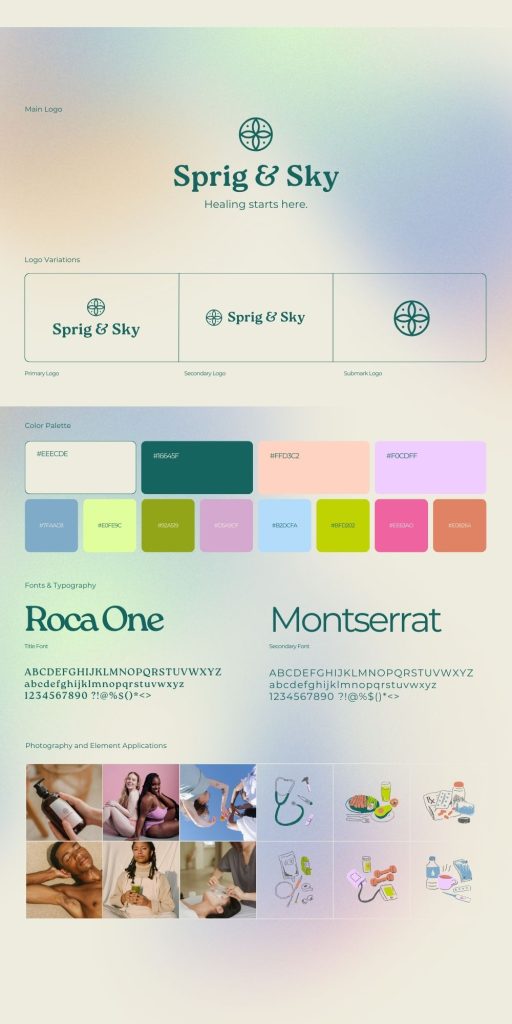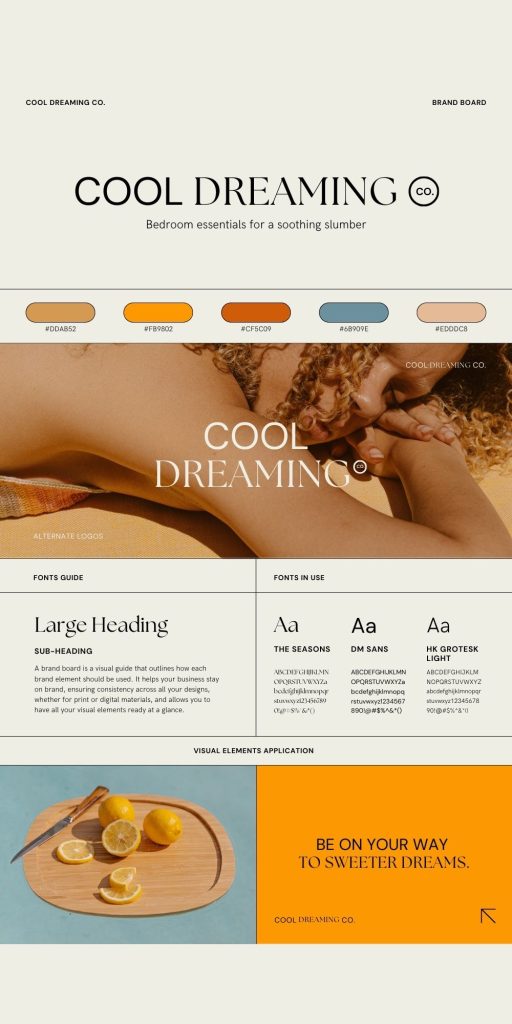Table of Contents
The Role of the Logo in Marketing: Creating Strong First Impressions

The Role of the Logo in Marketing
The importance of logos in branding
In today's competitive digital landscape, the power of a well-designed logo cannot be underestimated. Your brand logo is the face of your business and has the potential to make a lasting first impression on your target audience. From Nike's iconic swoosh to Apple's simple yet instantly recognizable apple, successful logos have the ability to captivate consumers and convey the essence of a brand with a single glance.
But what makes a logo really effective? How can you ensure that the logo does it set you apart from the crowd and resonate with your audience? In this article, we'll unlock the secrets to creating a logo that leaves a lasting impression.
We'll explore the key elements of a successful logo and delve into the psychology behind the choices color, shape and typography. By understanding the principles of logo design, you'll gain the knowledge to unleash the power of your brand through a powerful and memorable visual identity.
One logo serves as a visual representation of your brand. It's the first thing potential customers see and associate with your business. A well-designed logo can create a positive perception and build credibility. It becomes the face of your brand, appearing on everything from your website to your social media profiles, business cards and product packaging.
A logo plays a key role in brand recognition and recall. When consumers see a familiar logo, it triggers an immediate connection with the brand and evokes feelings and memories associated with past experiences. For example, the golden arches of McDonald's or the interlocking circles of Audi are instantly recognizable and immediately bring the respective brands to mind.
One marvelous logo it can also act as a powerful marketing tool. It sets your brand apart from competitors and helps you stand out in a crowded market. A logo that is unique, memorable and visually appealing can attract attention, spark interest and pique curiosity. It becomes a visual representation of your values, personality and brand promise.
Elements of a powerful logo
Designing a strong logo involves careful consideration of many key elements. These elements work together to create a cohesive and compelling visual identity for your brand. Let's take a closer look at each of these elements:
1. Simplicity: A successful logo is often simple and uncluttered. It should be easily recognizable and memorable even at small sizes. Simple logos are more likely to stand out and be easily understood by viewers. Think the Nike swoosh or the logo by Apple – both are clean, minimalist designs that have become iconic.
2. Discretion: Your logo must be unique and distinct from your competitors. It should set your brand apart and make it instantly recognizable. Avoid generic or cliché designs that blend in with the crowd. Look for ways to express your brand's unique qualities and values through your logo's design elements.
3. Relevance: A successful logo relates to your brand and its core values. It should visually communicate the essence of your business and resonate with your target audience. Consider your industry, target market and brand personality when designing your logo. For example, a tech startup might choose a sleek and modern design, while a children's toy brand might choose a playful and colorful logo.
4. Flexibility: Your logo should be flexible enough to be used across different media and platforms. It should look just as good on a website, business card, social media profile or billboard. Think about how your logo will appear in different sizes, colors and backgrounds. A flexible logo can be adapted to different environments without losing its impact and readability.
5. Timelessness: While trends come and go, a great logo design stands the test of time. Aim for a logo that will remain relevant and effective even years later. Avoid incorporating elements that can quickly become outdated or clichéd. Instead, focus on timeless design principles and classic aesthetics that have proven longevity.
Color psychology in logo design
Color plays an important role in logo design as it has the power to evoke emotions, convey meaning and influence perception. The different ones colors they have different psychological associations, and understanding these associations can help you make informed color choices for your logo. Let's explore some common colors and their psychological impact:
1. Red: Red is a dynamic and energetic color that can evoke strong emotions. It is often associated with passion, love and excitement. Red can draw attention and create a sense of urgency. It is commonly used in logos to convey strength, power and action.
2. Blue: Blue is a calm and soothing color often associated with trust, reliability and professionalism. It is a popular choice for corporate logos as it conveys a sense of stability and reliability. Blue can also evoke feelings of calm and peace.
3. Yellow: Yellow is a bright and cheerful color that is often associated with happiness, optimism and warmth. It can attract attention and create a sense of energy and positivity. Yellow is commonly used in logos to communicate joy, creativity and friendliness.
4. Green: Green is a color that symbolizes growth, nature and harmony. It is often associated with health, freshness and environmental consciousness. Green can create a sense of balance and calm. Commonly used in logos for eco-friendly and sustainable brands.
5. Black: Black is a color that conveys elegance, sophistication and authority. It is often associated with power and mystery. Black can create a sense of luxury and exclusivity. It is commonly used in logos for top brands and luxury products.
When choosing colors for your logo, consider the emotions and associations they evoke and whether they align with your brand's values and personality. Additionally, make sure the colors you choose are visually appealing and provide good contrast for readability.
Typography in logo design
Typography is another critical element of logo design that can greatly affect how your brand is perceived. Your choice of fonts and typography styles can convey different moods, personalities and associations. Let's explore some key considerations when it comes to typography in logo design:
1. Font selection: When choosing a font for your logo, consider your brand personality and the emotions you want to evoke. Serif fonts, with their decorative touches, often convey tradition, elegance and reliability. Sans-serif fonts, on the other hand, have a more modern and clean look, often associated with simplicity and efficiency. Script fonts can add a touch of elegance and creativity, while screen fonts can create a bold and striking impact.
2. Readability: A logo must be legible, even at small sizes or from a distance. Make sure the chosen font is legible and doesn't lose clarity or distort when scaled down. Avoid overly complex or decorative fonts that can hinder readability.
3. Balance and Hierarchy: Consider the balance and hierarchy of typography elements in your logo. Pay attention to the size, weight and placement of different typographic elements to create a visually pleasing and balanced composition. The hierarchy of typography can help guide the viewer's eye and emphasize important information.
4. Adjustment: In some cases, customizing typography elements can add a unique touch to your logo and make it stand out. Custom lettering or hand typography can give your logo a distinct personality and make it more memorable. However, make sure the custom typography remains legible and aligns with your brand identity.
When it comes to typography in logo design, simplicity and legibility are key. Choose fonts that are visually appealing and appropriate for your brand's personality and target audience. Experiment with different font pairings and combinations to find the perfect balance for your logo.
Creating a memorable and timeless logo
Creating a memorable and timeless logo requires careful thought and thought. Here are a few tips that will help you design a logo that stands the test of time:
1. Research and Inspiration: Start by researching your industry, competitors and target audience. Look for inspiration from successful logos in similar fields and identify what makes them effective. This research phase will help you gain knowledge and generate ideas for your own logo design.
2. Sketch and concept development: Begin the design process by sketching out multiple ideas and concepts. Explore different shapes, symbols and typography styles. Experiment with different compositions and layouts. This phase allows you to explore different directions and refine your ideas before moving on to digital design.
3. Digital Design and Enhancement: Once you have a selection of strong ideas from your sketches, translate them into digital designs using graphic design software. Pay attention to detail and improve your designs iteratively. Experiment with different color palettes, typography options and variations of your logo to find the perfect combination.
4. Feedback and Iteration: Ask for feedback from colleagues, friends or industry professionals. Gather constructive criticism and ideas to further improve it logo your. Iteration is an essential part of the design process, and multiple rounds of feedback and refinement can help you create a logo that really resonates with your target audience.
5. Test in different contexts: Before finalizing your logo, test it in different environments and sizes. Make sure it looks good on a variety of backgrounds, both in color and black and white. Test its readability at different sizes and distances. Consider how it will appear across different mediums, such as websites, packaging and social media profiles.
By following these steps and investing time and effort into the design process, you can create a logo that is not only visually appealing but also memorable and timeless.
How to choose the right logo for your brand
Choosing the right logo for the brand name involves you considering various factors and aligning the design with your brand identity and target audience. Here are some guidelines to help you make an informed decision:
1. Brand identity: Consider your brand's personality, values and positioning. Your logo should be a visual representation of these elements. Think about the feelings and associations you want your logo to evoke. Choose design elements, colors and typography that align with your brand identity.
2. Common aim: Understand your target audience and their preferences. Consider their demographics, interests and values. Customize your logo design to appeal to and resonate with your target audience. A logo that connects with your target audience can create a stronger brand-consumer relationship.
3. Industry and competition: Research your industry and your competitors' logos. Identify common design trends and clichés to avoid. Look for opportunities to differentiate yourself and stand out from the competition. A unique and distinctive logo can help you create a niche in the market.
4. Scalability and adaptability: Make sure your logo is scalable and adaptable to different media and sizes. It should look good both in small sizes and when blown up in larger forms. Think about how it will appear on different platforms, from digital to print, and make sure it maintains its impact and readability.
5. Long life: Aim for a logo design that will remain relevant and effective for years to come. Avoid design elements that can quickly become outdated or clichéd. Choose a timeless design that can withstand changing trends and evolving consumer preferences.
Choosing the right logo is a critical step in building a strong and memorable brand. Take the time to carefully consider your options and seek feedback from trusted sources to ensure your logo accurately represents your brand and resonates with your target audience.
Conclusion: Leveraging the power of logos for your brand
In today's visually saturated world, a well-designed logo is essential to create a lasting first impression and create a strong brand identity. By understanding the elements of a powerful logo and the psychology behind color, shape and typography choices, you can create a logo that captivates your target audience and resonates with them on a deeper level.
Remember, simplicity, distinctiveness, relevance, flexibility and timelessness are key principles to keep in mind when designing your logo. Examine the psychological impact of color and the emotional associations of different typography styles. Invest time and effort in the design process, seeking feedback and iterating to create a logo that truly represents your brand.
By harnessing the power of logos, you can unlock the potential to create a strong and memorable visual identity that sets your brand apart, grabs attention and leaves a lasting impression. Your logo has the ability to captivate consumers, convey the essence of your brand and create a strong connection with your target audience. So, unlock the secrets to logo power and let your brand make a lasting first impression.



Interest Form